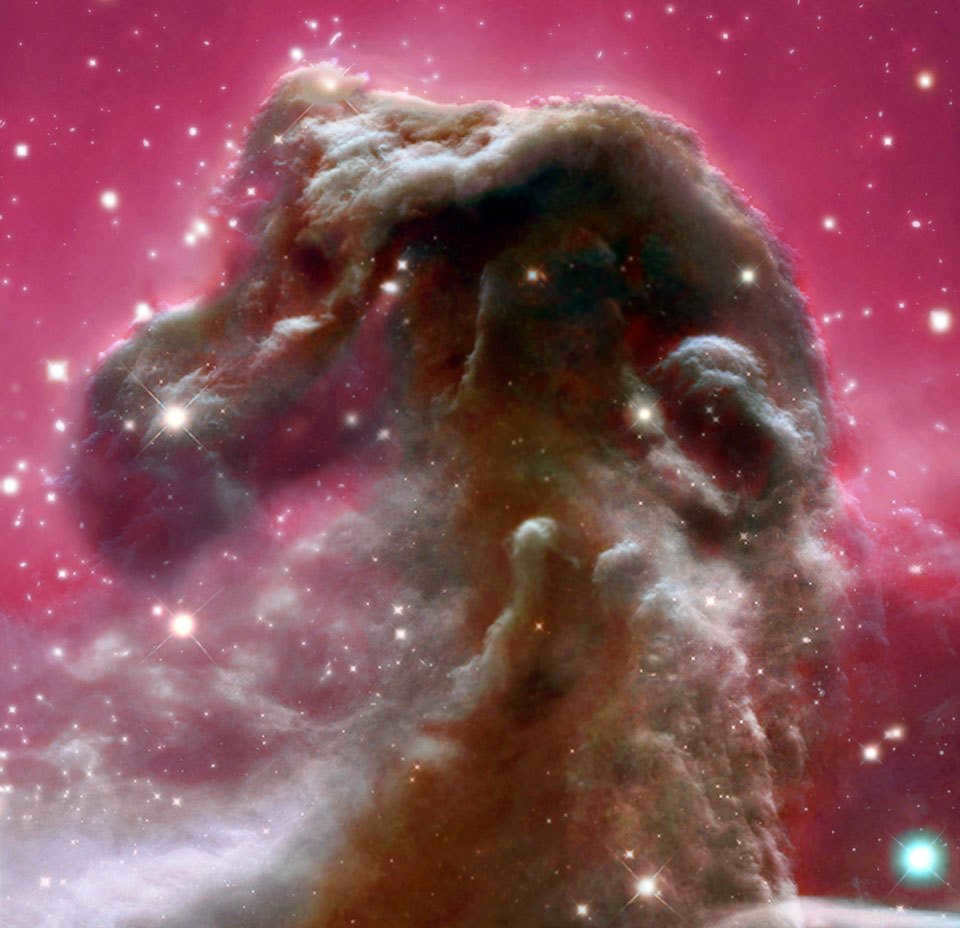The Horsehead Nebula, also known as Barnard 33, is a well-known dark nebula that was initially observed in 1888. Its distinctive name comes from its striking resemblance to the head of a horse when captured in photographs. Among all the dark nebulae in space, the Horsehead Nebula is particularly famous.
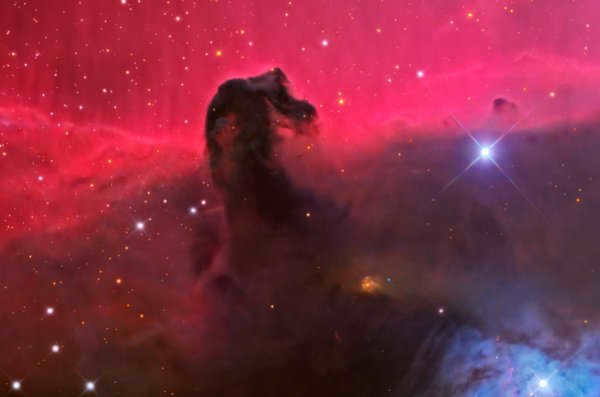
What is this celestial object?
This phenomenon is actually a combination of cosmic dust and gases that have swirled and taken on the appropriate shape. It is located within the Orion constellation and its surrounding entities.
Where can it be found?
The dark nebula Barnard 33 is situated 1500 light years away from Earth and is part of a larger entity known as the Orion Cloud. It is also associated with an emission nebula called IC 434. In terms of its position in relation to the constellations, it can be found:
These stars form the Hunter’s Belt, also known as Orion. This region belongs to our galaxy, the Milky Way. Despite its relatively small size – with a diameter of 3.5 light-years – the Horsehead nebula is just a small component of the overall constellation cloud.
Structure
Upon close examination of the photograph captured by the Hubble telescope, it becomes apparent that there exists a luminous region in the upper left corner, comprised of a cluster of youthful stars. This cluster’s presence has led to the collapse of the “parent” gas and dust cloud. The emission emanating from the youthful and massive star positioned at the pinnacle of the image contributes to Horsehead’s distinct silhouette.
Originating from the Orion Cloud, Horsehead is an integral component of this celestial structure. Structurally, Barnard 33 represents a dense assemblage of cosmic dust, through which the radiance of stars is unable to permeate. In essence, it is a shadowy and impenetrable expanse, surpassing a magnitude greater than 2 parsecs (1 parsec equivalent to 3.2 light-years) in size.
Lying behind Horsehead is a hydrogen cloud, which has become ionized due to the luminosity emitted by Orion. Consequently, the object has assumed a reddish tinge.
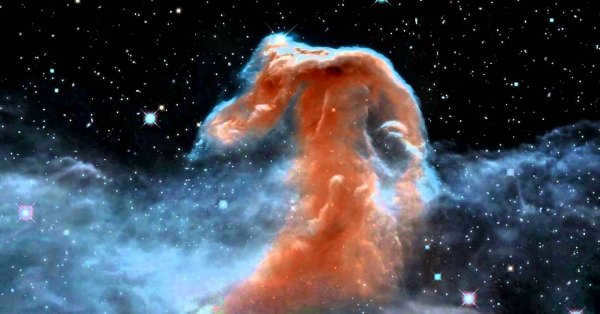
Structure
When we consider the structure of the dark nebula, the primary elements are:
This combination results in an extremely low temperature as the entity absorbs thermal radiation. This enclosed space is entirely filled with gas molecules and microscopic dust particles. It is this arrangement that facilitates the absorption of light and heat.
Formation of the Nebula: A Magnetic Field’s Influence
The emergence of the nebula known as Horseheads can be attributed to the influence of a powerful magnetic field acting on the surrounding gas. This magnetic field shapes the streams of gas, giving them their distinctive contours. At the base of the luminous areas, young stars are in the process of formation, destined to eventually separate from the Orion cloud and embark on their journey through space.
The interplay between composition and magnetic field is key to understanding the formation of this specific section of the Orion Nebula. Furthermore, the appearance of the Horsehead Nebula may have been altered by the presence of these nascent stars, which, during their birth, depleted a portion of the available “building material” and consequently affected the nebula’s current shape.
The discovery of the nebula in 1888 was purely coincidental. It occurred while conducting a survey of the Orion constellation. The survey image captured the Horsehead Nebula, which is situated slightly south of the star that marks the Hunter’s Belt. Only with extremely powerful equipment is it possible to distinguish a portion of the overall cloud. Amateur astronomers can only observe it during clear nights.
The most stunning photographs of the Horsehead Nebula were taken by the Hubble telescope in 2013, using wavelengths of 1.1 and 1.6 microns. These images provide a three-dimensional and intricate view of the object.
The Horsehead nebula is a unique object that provides an abundant supply of materials for the formation of new stars. It is often referred to as a “stellar cradle” due to its concentration of gas and dust that can condense to create new star clusters. As the gas and dust shrink under certain conditions, a star gradually forms and emerges from the cloud. The Horsehead nebula is surrounded by other fascinating celestial objects:
This region is known for its continuous star formation, which provides ample opportunities for capturing stunning images. In close proximity to the upper ridge of Barnard 33, two new stars have recently been discovered. However, one of these stars emits ultra-powerful ultraviolet radiation that is causing the surrounding cloud to collapse. Although the surrounding parts have vanished, the main column of the Horsehead nebula remains intact.


The Horsehead Nebula, which is widely recognized, was first discovered in 1888. Its name is derived from the distinctive shape it possesses, resembling the head of a horse. Notably, it appears against a backdrop of vibrant red. This striking appearance is a result of the ionization of hydrogen clouds surrounding the nebula.
The dark portion of the horse’s head is attributed to the presence of a dense layer of dust, which absorbs light in the region. However, there are also luminous areas that emerge during the formation of new stars.
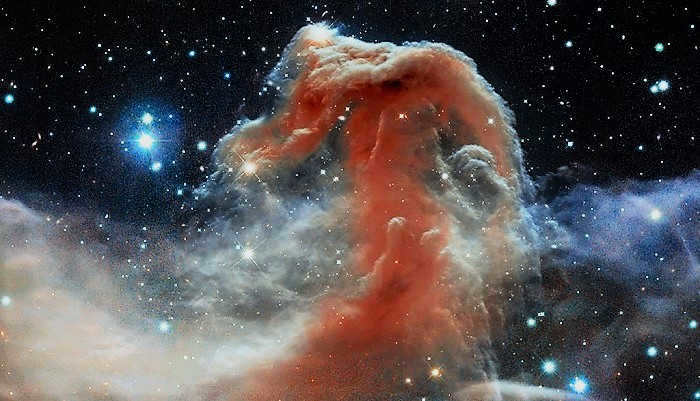
Location of the Nebula
The Horsehead Nebula can be found in the Orion constellation. More precisely, it is situated south of the eastern star of the constellation. Additionally, it forms part of the Orion cloud. Its distance from Earth is estimated to be around 1500 light years.
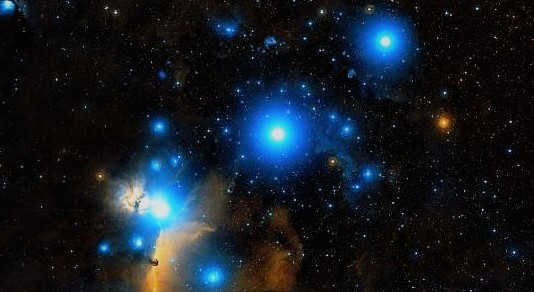

Structure and Composition
The IC 434 nebula is a confined and opaque region of space.
Within the Horsehead Nebula, there is a variety of gases present. Moreover, this region contains a significant amount of dust. As a result, this celestial object absorbs thermal radiation, including heat and light.
Recent discoveries have revealed that the nebula is composed of young stars, which, during their formation, disperse the surrounding clouds of gas and dust.
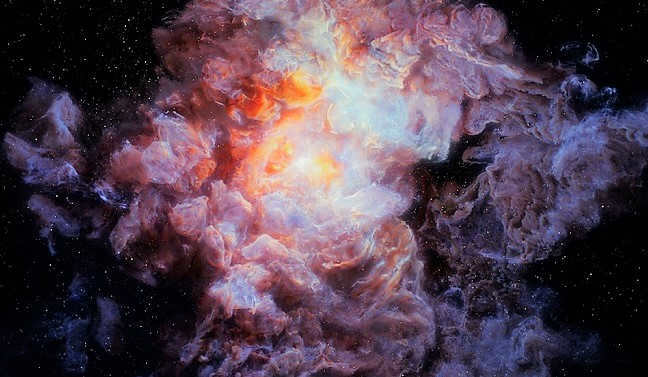
According to astronomers, the nebula IC 434 was formed through the collapse of an interstellar cloud.
Interesting facts about this nebula
Locating and observing this nebula is extremely challenging for earthly observers and can only be accomplished with powerful equipment.
However, it is clearly visible in photographs captured by satellites. The Hubble telescope has taken and transmitted many stunning images of this nebula, making it one of the most captivating spectacles in the universe. This is likely why the Horse’s Head nebula is so well-known and popular.
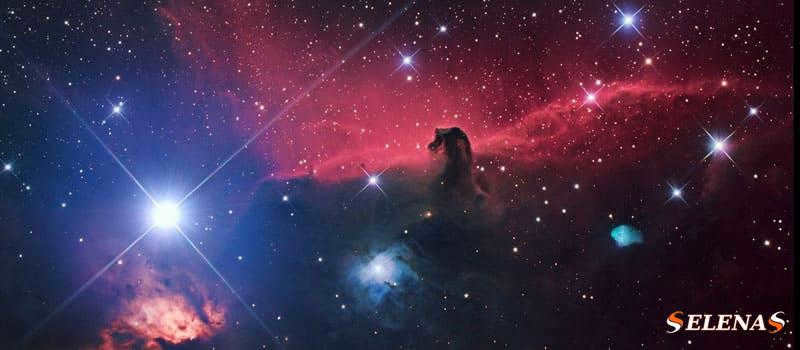
This article will delve into the enigmatic nebula known as the Horse’s Head, situated in the constellation of Orion.
During the evening of July 27, 1913, esteemed astronomer E. E. Barnard observed that the night sky above Yerkes Observatory in southern Wisconsin was practically flawless.
The heavens were remarkably clear, and the atmosphere in the Midwest was unusually stable.
He directed the gaze of the world’s largest refractor telescope towards Orion, aiming to capture a glimpse of the perplexing entity that had eluded him for many years, since his early days searching for comets.
Previous astronomers had documented the region through photography, yet the true nature – and even the existence – of the singular indistinct spot continued to spark controversy.
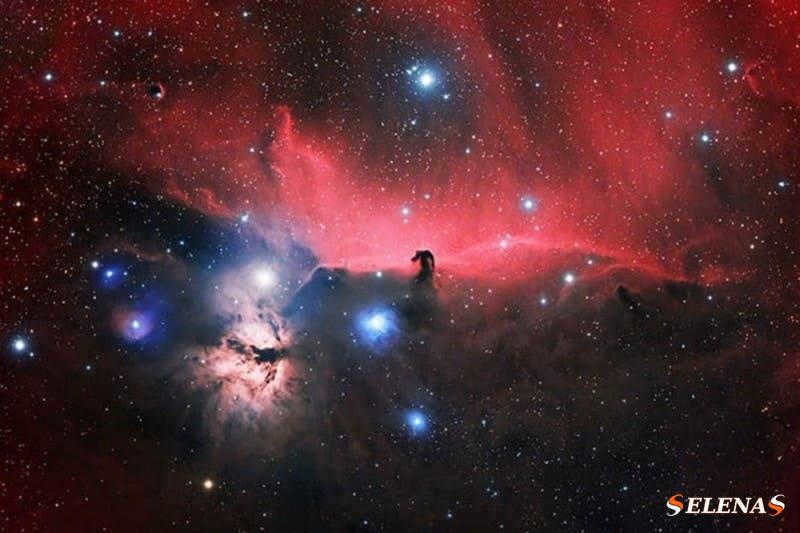

The Orion constellation is home to the famous Horsehead Nebula and the Flame Nebula, making them popular targets for amateur astronomers.
However, on this particular night in Wisconsin, something stood out against the bright sky – a distinctive black silhouette.
“Judging by its appearance, there is no doubt that this spot is occupied by a real object – it looks dusty but slightly brighter than the night sky,” wrote Barnard.
“This object has not received the attention it deserves,” he added.
Barnard also managed to capture a photograph of a celestial object that is still recognizable to space enthusiasts today.
He ultimately managed to conquer the Horsehead Nebula, an entity that has gained even more prominence in recent times, thanks to the advent of high-budget space telescopes and state-of-the-art tools for amateur stargazers.
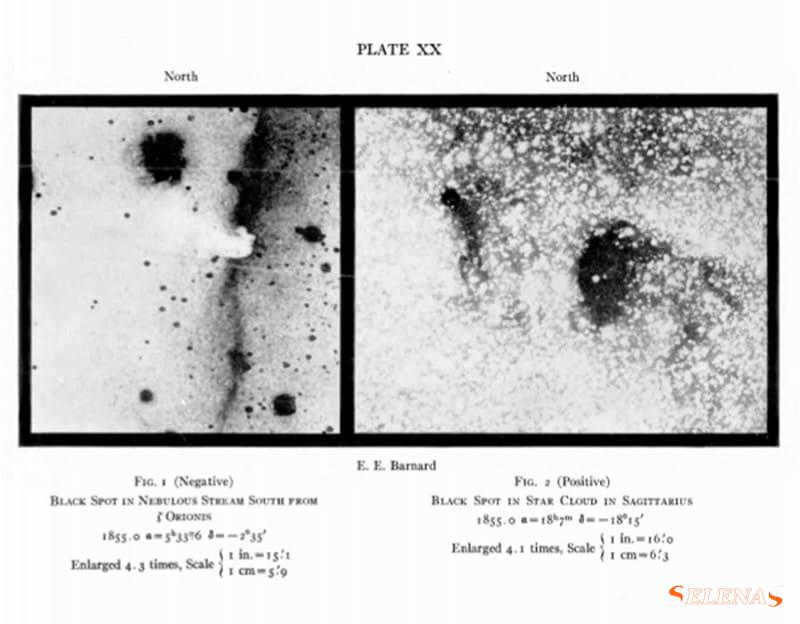

More than a hundred years ago, astronomer E. E. Barnard documented a detailed image to the left of what he referred to as Barnard 33, now acknowledged as the Horsehead Nebula.
The Horsehead Nebula, situated in the Orion constellation, has captivated the public’s attention unlike any other celestial objects.
It has become a popular symbol, appearing on various merchandise such as t-shirts, tattoos, and posters decorating the walls of space enthusiasts.
However, spotting the Horsehead Nebula in the actual night sky can be quite challenging.
At present, our knowledge indicates that the Horsehead Nebula is a nebula composed of cold gas and dust that absorbs light.
As Barnard’s research has revealed, the distinctive shape of this dark cloud is visible because it obstructs the light from the brighter nebula that lies beyond.
The protrusion resembling a “jaw” on the horse’s head is actually formed by the intense radiation emitted by the nearest star, which falls upon the dark cloud.
Although it is tempting to focus solely on this captivating object, the Horsehead Nebula is just a small part of the vast Orion molecular cloud complex.
This region, where stars are formed, spans hundreds of light-years and covers a significant portion of the Orion constellation itself.
Through extensive study, astronomers have discovered that young stars, some of which possess protoplanetary disks, have already formed within this stellar nursery.
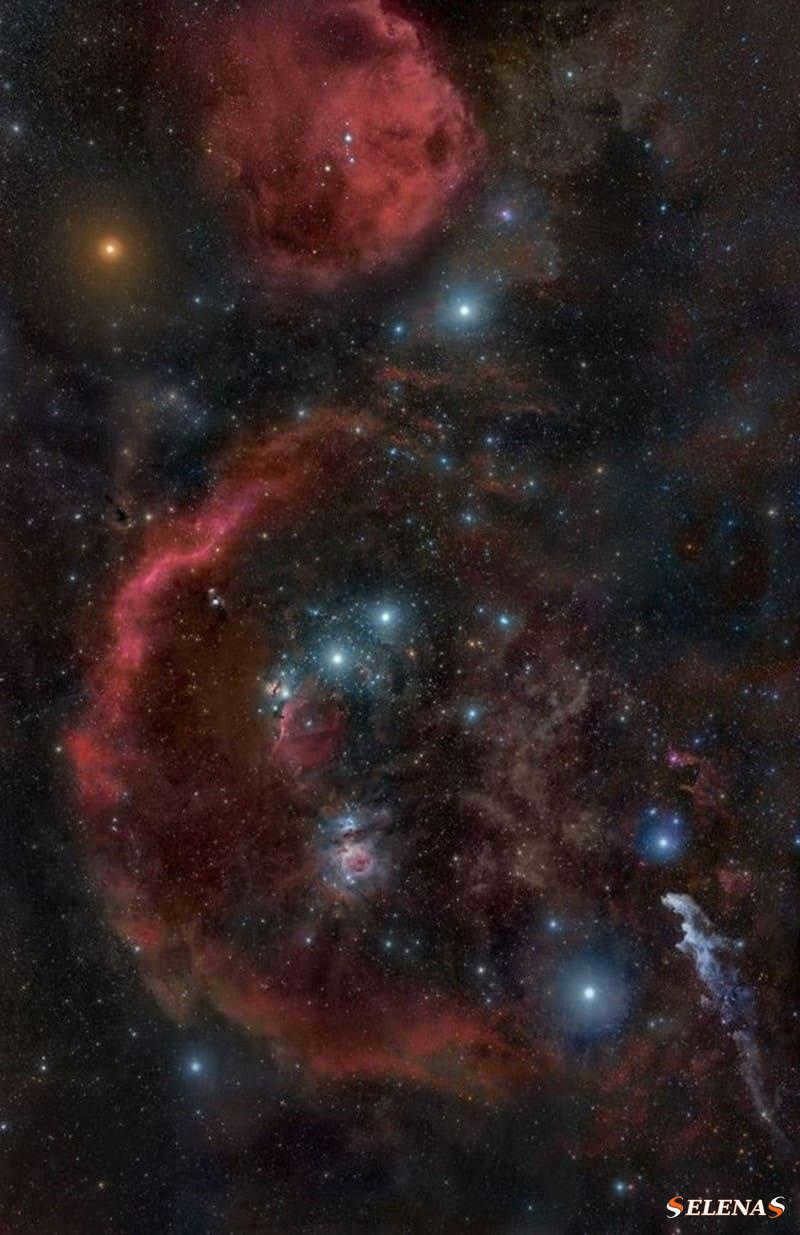

The Horsehead Nebula is located in the night sky of Earth as part of the molecular cloud complex in Orion. To locate the Horsehead Nebula, one can look south of the easternmost star in Orion’s Belt.
However, finding the Horsehead Nebula itself can be a bit challenging despite its easy location.
As previously mentioned, the Horsehead Nebula is situated near Alnitak, also known as Orion’s Zeta, which is the easternmost star in Orion’s Belt.
You can spot the Horsehead Nebula just to the south.
Due to its distinctive shape and vibrant pink colors, the Horsehead Nebula has been a popular target for telescopes for many years.
However, despite its widespread popularity, the gas cloud is actually quite faint.
The Horsehead Nebula is located at a considerable distance from Earth – approximately 1,500 light-years away.
As a result, it only shines with a magnitude of 6.8.
Furthermore, there is typically a relatively bright star within the same field of view.
Consequently, when observed through a telescope, the Horsehead Nebula appears dim, small, and slightly blurry.
Nevertheless, due to its challenging detectability, some amateur astronomers opt to observe it.
That is one of the reasons why its distinctive shape went unnoticed when the gas cloud was initially discovered.
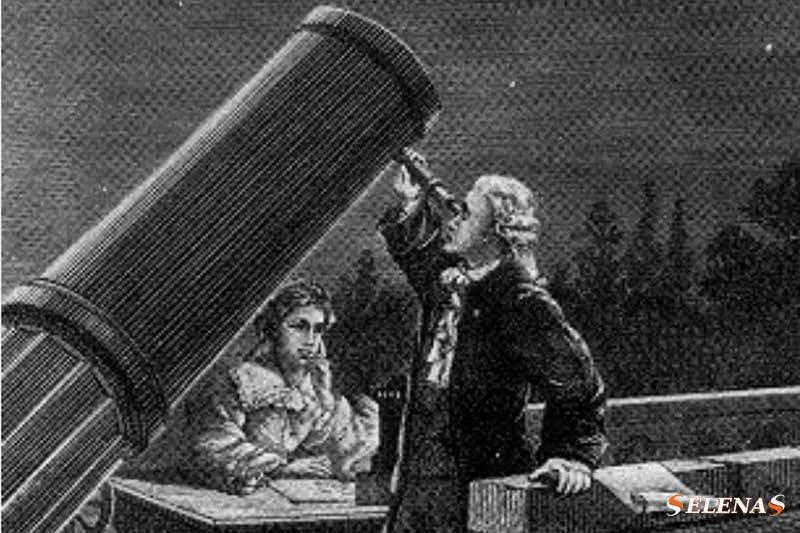
While his sister Caroline Herschel took notes, William Herschel observed through an eyepiece and made a remarkable discovery in 1781 – the planet Uranus.
What is the story behind the discovery of the Horsehead Nebula?
The origins of the discovery of the Horsehead Nebula are surprisingly convoluted, especially considering its prominence in astronomical knowledge today.
Over the years, several astronomers stumbled upon it, but their limited equipment hindered detailed studies.
It is believed that British astronomer William Herschel, renowned for his discovery of Uranus, might have been the first to observe the Horsehead Nebula through a telescope.
Herschel was an extremely observant individual and in 1811, he submitted an article titled The Construction of the Heavens to the esteemed journal Philosophical Transactions.
Within this article, Herschel meticulously documented 52 nebulous entities that he had witnessed throughout his lifetime, all of which were scattered across the night sky.
Herschel noted that these objects were only visible under the perfect condition of clear air and after the observer had spent enough time in darkness for their eyes to adjust to the absence of light.
However, despite Herschel’s diligent observations, his descriptions of these objects were frustratingly vague and lacked detail.
As a result, they were largely disregarded for nearly a century.
It wasn’t until Isaac Roberts, a dedicated amateur astronomer from Wales, took it upon himself to photograph the 52 locations mentioned by Herschel, that these entities began to receive the attention they deserved.
It took him a period of six years to accomplish the task, and in a document released in 1902, Roberts presented a mainly negative perspective on the presence of Herschel’s mysterious targets.
Nevertheless, there were a few locations that clearly distinguished themselves.
And one of the places corresponded precisely to the position of the Horsehead Nebula, which Roberts managed to capture in a picture.
However, Roberts had weak eyesight and could not discern many details.
He continued to disregard it as a mere “nebula flow”.
Meanwhile, at the turn of the century – and seemingly unknown to many in the field or simply not acknowledged in their publications – another astronomer had already found the object in his expanding catalog.
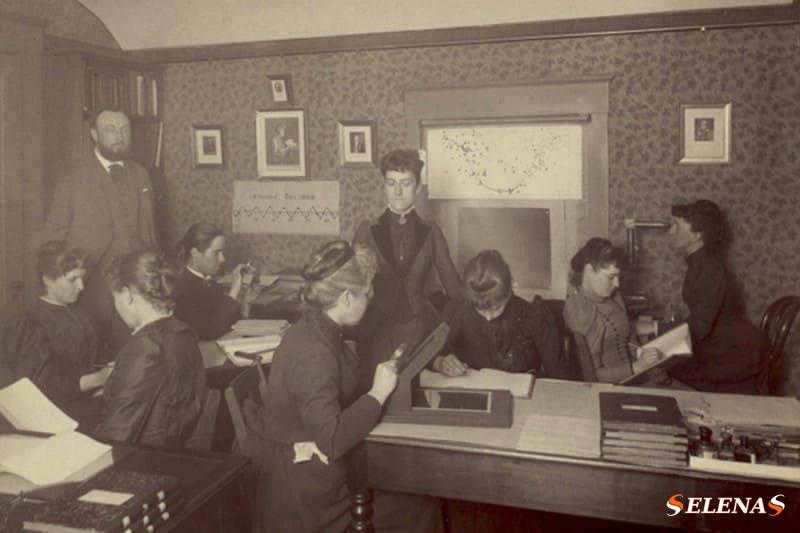
In the late 1800s, Williamina Fleming (standing), along with Edward Pickering (far left), led a team of human “computers” who meticulously cataloged and classified numerous celestial entities, such as the Horsehead Nebula.
More than a century ago, Williamina Fleming, a human “computer,” was employed at the Harvard College Observatory.
Originally a maid in the household of Edward Charles Pickering, the observatory’s director, this Scottish astronomer quickly transitioned into analyzing stellar spectra – the unique chemical signatures of stars.
Fleming’s star classification system gained widespread recognition and is still utilized by astronomers today.
Throughout her career, Fleming meticulously cataloged numerous celestial objects, including the Horsehead Nebula.
During her examination of one of Pickering’s photographic plates in 1888, she fortuitously stumbled upon this nebulous entity.
At the time, it was simply one more nebula among the countless other objects she documented during her lifetime.
Nevertheless, Fleming is rightfully acknowledged as the first person to officially identify the Horsehead Nebula.
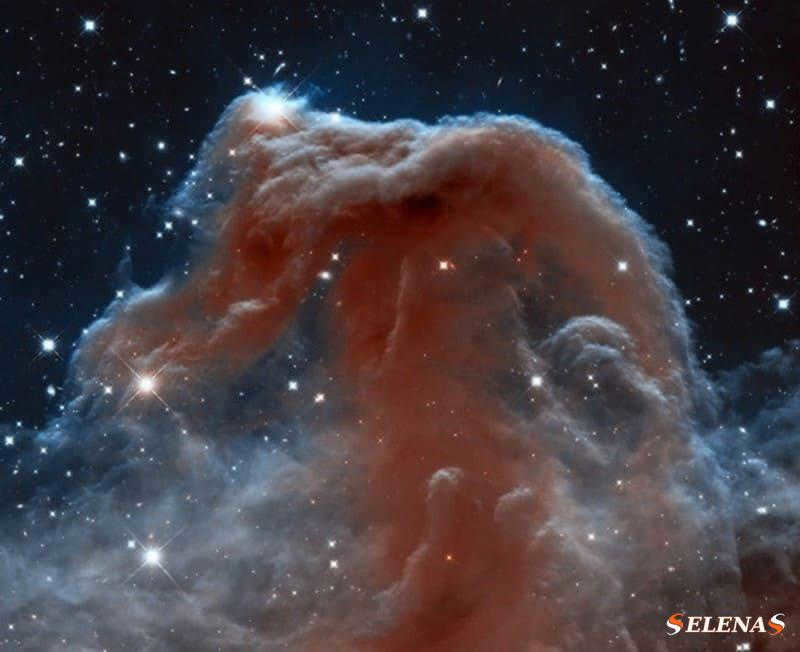

The Hubble Space Telescope has captured this stunning image of the Horsehead Nebula, which is just a small portion of the expansive cosmic cloud where new stars are currently forming.
However, the question of who bestowed the name “Horsehead Nebula” upon it still remains.
There is uncertainty in the historical record regarding this matter.
Neither Herschel nor Fleming are credited with naming it.
In his subsequent 1902 study, Roberts did not use this term, and Barnard also seems to have overlooked its resemblance to horses in his articles.
Even early sources differ in what they choose to call it.
In a book from 1922 titled “Astronomy for Young People,” it is referred to as the Dark Horse Nebula.
However, the Horsehead Nebula, which is more commonly known, was a familiar term among astronomers in the early 1920s.
Shortly after, though, the latter phrase gained popularity as more astronomers were able to capture detailed images of it.
During the start of the space race, the Horsehead Nebula was a favorite subject in astronomy literature, magazines, and even science fiction.
Nowadays, the Horsehead Nebula is more likely to be seen as desktop wallpaper rather than in scientific journals.
Nevertheless, people still admire the exquisite beauty of the nebula itself.
Space enthusiasts all over the world are captivated by the allure of these charismatic cosmic horses.
And it is highly unlikely that this fascination will change anytime soon.
Fascinating information about the Horsehead Nebula
- The Horsehead Nebula (NGC2023) is a well-known and easily recognizable nebula in space. It is commonly referred to as the dark nebula due to its distinctive dark spot that resembles the head of a horse.
- The term “Horsehead” specifically refers to a small section within the larger nebula.
- This nebula is incredibly dense and opaque, completely obscuring the stars that lie beyond it. It was initially discovered by the Scottish astronomer Williamina Fleming in 1888 and has been a source of fascination for generations.
- Located south of Alnitak in the Orion constellation, the Horsehead Nebula is a captivating sight. Alnitak is one of the three stars that form Orion’s belt and is equally mesmerizing, just like the neighboring Flame Nebula.
- The pink hue is a result of ionized hydrogen gas being illuminated by Sigma Orionis, a multiple star system composed of five stars, two of which are in close proximity. The region is a breeding ground for new stars.
- The Horsehead Nebula is located approximately 1,500 light years away from Earth.
Location of the Horsehead Nebula
The Horsehead Nebula can be found at 05 h. 40 min. 59.0 s Eastern European time.
Direct ascension refers to the object’s angular distance along the celestial equator from the March equinox point.
For orientation purposes, the nebula is situated in the Pisces constellation.
If the number is negative, it means the nebula is positioned “west” of the March equinox.
Declination represents the angle between the object and the celestial equator.
A negative value indicates that the nebula is located in the southern hemisphere.
As a reference point, the closest visible star to the naked eye near the dark nebula is Alnitak.
To avoid any confusion, the closest star is the one that can be seen without binoculars or a telescope in a two-dimensional plane, regardless of its distance.
Dimensions of the Horsehead Nebula
The Horsehead Nebula measures approximately 3.50 light-years in radius, equivalent to a diameter of 7 light-years.
Travelling at the speed of light, it would take a spaceship 7 years to traverse from one side of the nebula to the other.
By comparison, our very own Milky Way galaxy spans a diameter of 100,000 light years.
In contrast, the Andromeda galaxy boasts an impressive diameter of about 220,000 light years.
However, the enormity of IC 1101, the largest known galaxy at present, is staggering, with an estimated width of 4 million light years. It truly boggles the mind, doesn’t it?
Angular size
Angular size refers to the size of an object measured in angular minutes, which can be approximately converted to light-years if the distance to the object is known.
The formula for calculating angular size is: Distance * Tan ((MA/60)/(180/Pi)), where MA represents the major axis value.
While this calculation may not provide an exact peer-reviewed measurement, it can give you an estimation of the object’s size.
The distance measurement can be in any unit you prefer, such as parsecs, light-years, or megaparsecs.
- The major axis of the object, representing its length, is 6.
- The minor axis of the object, representing its width.
- The orientation angle of the Horsehead Nebula is 4.
- The quality score is 90, with A representing the highest quality and E representing the lowest quality.
Duration of the Journey to the Horsehead Nebula
The duration of the journey to reach the Horsehead Nebula depends on the speed at which one is traveling.
U.G. conducted some calculations to determine the time it would take to travel at various speeds.
It is important to note that when referring to years, I am specifically referring to non-leap years consisting of 365 days.
The New Horizons space probe holds the distinction of being the fastest probe ever launched into space.
Its primary objective was to explore Pluto, which was still considered a planet at the time of the probe’s launch in 2006.
Location map of Orion’s Horsehead Nebula
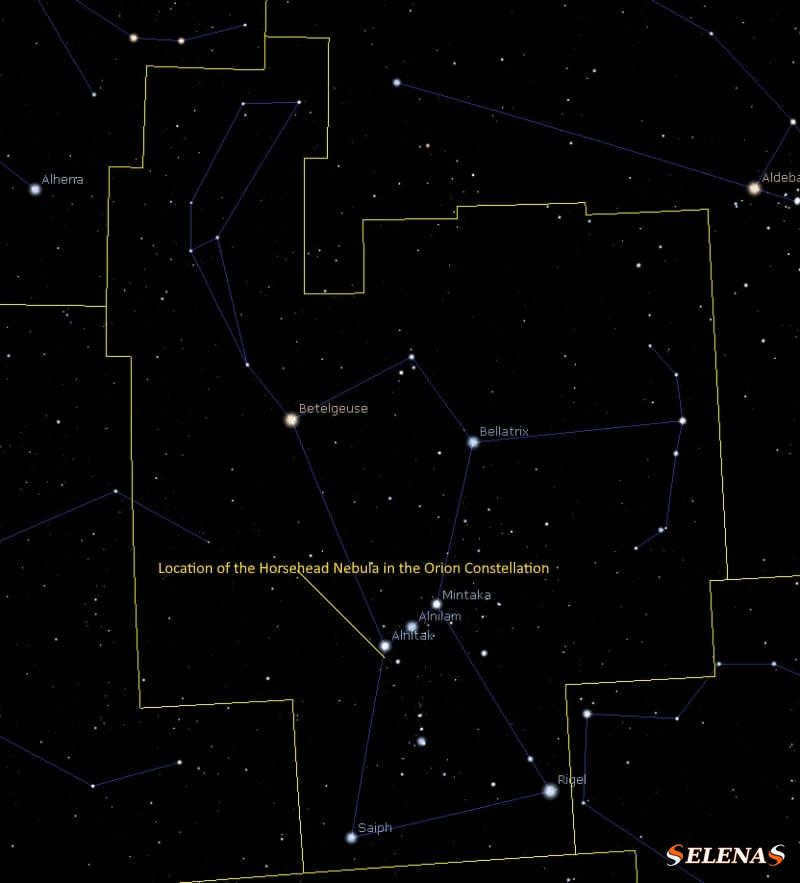
The above image showcases the precise whereabouts of the Horsehead Nebula, also known as Barnard 33, in the Orion constellation. This visual representation was generated utilizing the remarkable Stellarium application.
If you possess any lingering inquiries or wish to share your thoughts regarding this article, kindly do so in the comments section provided below.
Until next time! Feel free to join us!
The Horsehead Nebula, officially designated as Barnard 33, stands out as one of the most renowned entities in the celestial sphere. Even with the aid of amateur telescopes, this astronomical phenomenon exhibits a truly mesmerizing appearance. However, it is worth questioning whether this object perpetually appears as it does in the conventional optical range photographs.
The Horsehead Nebula can be found in the constellation of Orion, which is known for being the most abundant region of the sky when it comes to fascinating celestial objects. It is positioned just below the brilliantly shining star Alnitak, which happens to be the leftmost star in Orion’s Belt. In terms of distance, the Horsehead Nebula is approximately 1,600 light-years away from us, equivalent to about 490 parsecs. While this may not seem very far, in the grand scheme of the galaxy, it actually makes the Horsehead Nebula our close cosmic neighbor.
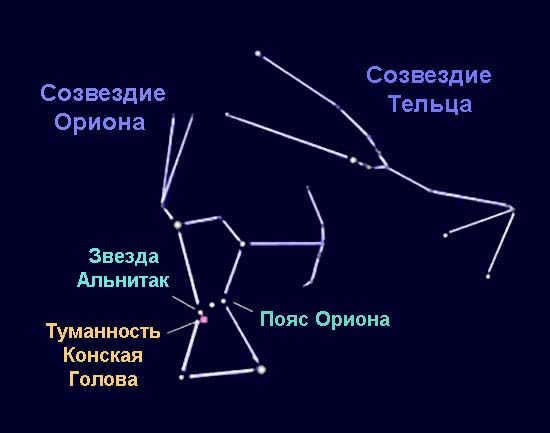
However, observing the Horsehead nebula with amateur telescopes can be challenging. Nonetheless, it is possible to capture it through photography, especially when using a specialized filter that allows only the emission of ionized hydrogen. The reason why we can see Barnard 33 is because it stands out against the backdrop of another nebula that emits intense light in this specific spectrum. When using such a filter, the resulting photo of the Horsehead nebula appears as shown below.
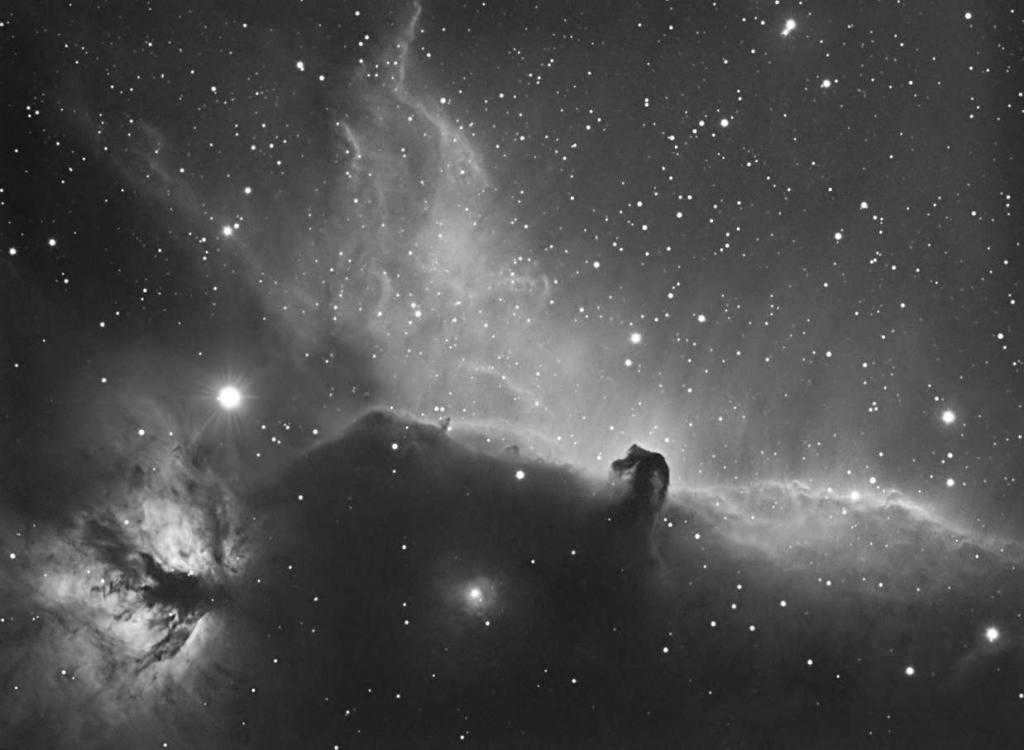
Appearing from a mist
If you observe the image of the nebula closely, you will notice that it seems to be emerging from a colossal dark mist illuminated by stars. This magnificent phenomenon can astonish and captivate an individual, particularly when considering that the “neck” and “head” of the celestial horse occupy a region spanning approximately 3.5 light years.
The vast structure to which they belong is merely a small component of an even more magnificent formation spanning hundreds of light-years. This formation encompasses massive interstellar clouds composed of dust and gas, vibrant diffuse nebulae, dark globules – isolated clouds of gas and dust, as well as young stars in the process of formation. This entire intricate structure is referred to as the Orion Molecular Cloud.
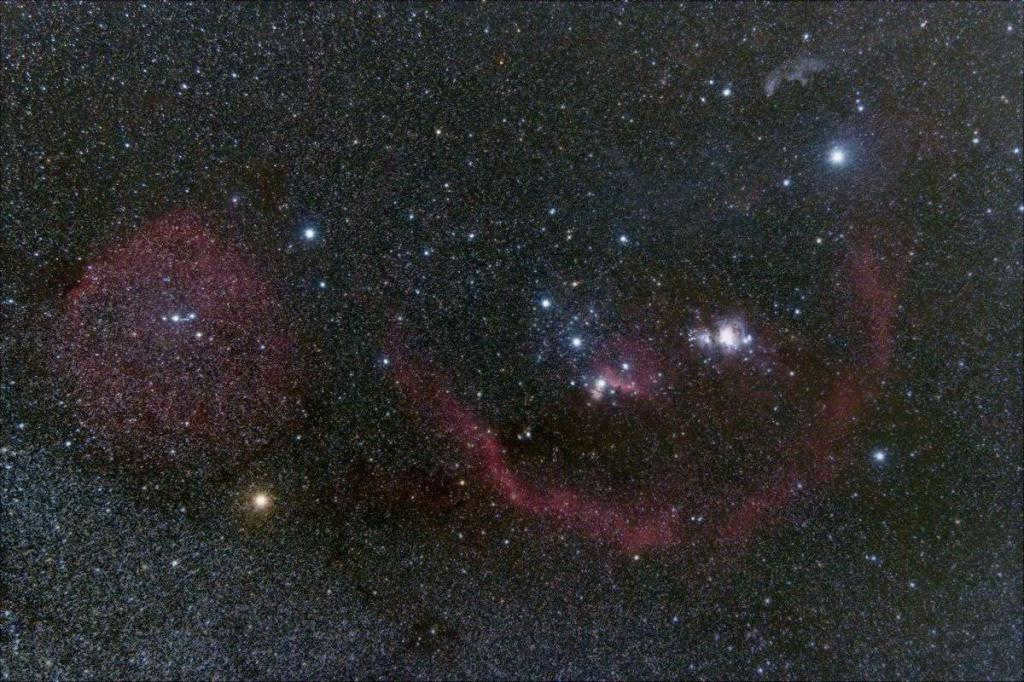
The characteristics of the enigmatic Horsehead Nebula
The term “enigmatic” refers to its ability to absorb light without emitting or scattering it, making it visible in the optical range solely due to its silhouette blocking the light from the emission nebula IC 434 located behind it.
These celestial entities are relatively dense, compared to other interstellar formations, and consist of vast clouds of gas and dust. They possess highly irregular and ambiguous boundaries, often exhibiting intricate and irregular shapes.
These cold clouds have temperatures that do not exceed a few tens, and sometimes even units, of kelvin. The gas exists in molecular form, and interstellar dust is also present – solid particles that are up to 0.2 microns in size. The dust makes up about 1% of the mass of the gas. The concentration of matter within a molecular cloud can range from 10 -4 to 10 -6 particles per cubic centimeter.
The naked eye can spot the largest of these clouds, such as the Coal Sack in the Southern Cross constellation or the Big Dip in the Swan constellation.
The advancement of all-wave astronomy has enabled us to observe the universe in its broadest range. After all, physical entities have the ability to emit not only in the visible light range. Furthermore, this range of frequencies, which is the only one we can directly perceive, is quite narrow and represents only a small fraction of the entire electromagnetic radiation in the cosmos.
Infrared rays offer valuable insights into various celestial objects. For instance, they have become an essential tool in studying molecular clouds. When these clouds absorb light at optical frequencies, they inevitably re-emit it in the infrared part of the spectrum, carrying information about the nebula’s structure and the processes occurring within it. Dust poses no hindrance to these rays.
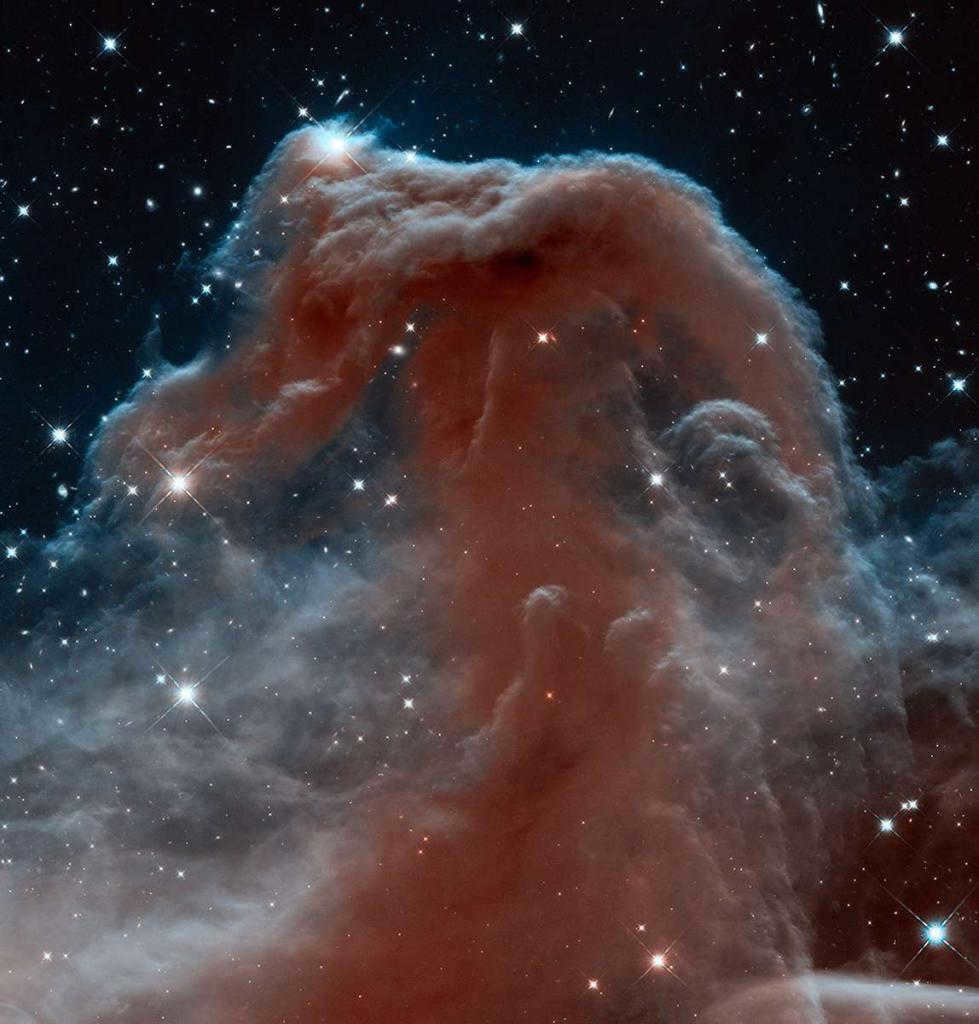
Back in 2013, the Horsehead Nebula was captured by the Hubble Space Telescope in a truly remarkable way. This stunning image was taken using wavelengths of 1.1 microns (blue color superimposed) and 1.6 microns (orange color), with the north positioned to the left. However, it no longer resembles a horse as much as it used to.
What’s Inside?
By examining the infrared images, the dust covering the nebula is seemingly lifted, revealing the cloud structure of Barnard 33. The dynamic nature of its outer regions is clearly evident: gas is being expelled due to the intense radiation from young, hot stars. One of these bright stars is located in the upper section of the cloud.
The destruction of the cloud is also caused by the ionizing radiation from the emission nebula IC 434. When observing the optical image, a glow can be seen along the edge of Barnard 33 – the ionization front where energetic photons interact with the outer layers of the cloud. This radiation ionizes the gas and literally propels it away. As it accelerates within the powerful magnetic field, it escapes the cloud. Therefore, the Horsehead nebula is gradually dissipating and will eventually vanish completely in a few million years.
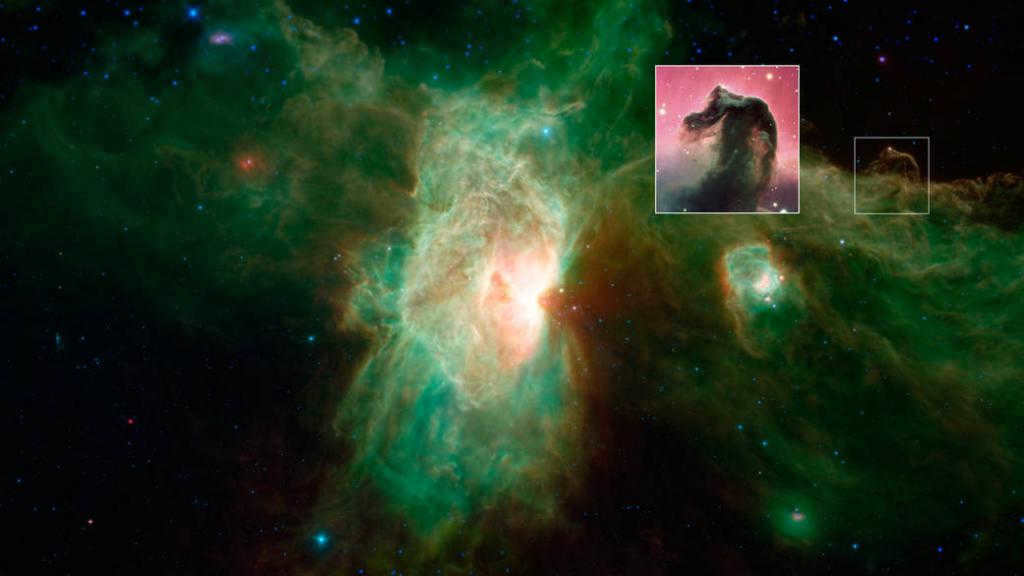
In the infrared image, captured using longer wavelengths, the Horsehead nebula reveals a distinct arrangement of gases. Instead of the familiar silhouette found in optical images, a prominent gas arch is clearly visible.
Due to their extremely low temperature, dark nebulae emit radiation in the long-wave region of the electromagnetic spectrum. Hence, scientists analyze the peaks in the microwave and radio spectra, known as spectral signatures, to study the chemical composition of these clouds. Additionally, researchers also examine the infrared emissions from the dust present in these nebulae.
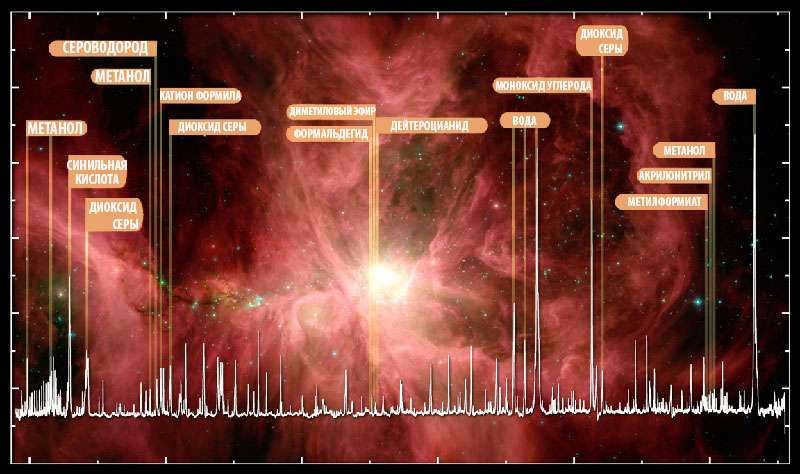
Hydrogen is the primary component found in all nebulae, making up approximately 70% of their composition. Helium accounts for around 28%, while the remaining substances vary from one nebula to another. The Horsehead nebula, for example, exhibits signatures of water, carbon monoxide, ammonia, hydrogen cyanide, neutral carbon, and other typical interstellar cloud compounds in its spectra. Additionally, organic compounds such as ethanol, formaldehyde, and formic acid have also been detected. However, there are still unidentified elements present in this nebula.
In 2012, researchers announced the discovery of the molecule responsible for this enigmatic signal. Surprisingly, the molecule is a basic hydrocarbon compound known as C3H + . What’s fascinating is that under normal conditions on Earth, this molecular ion would not be stable. However, in the rarefied environment of interstellar nebulae, there are no obstacles preventing its existence.
Cold and compact molecular clouds serve as the origin of star creation, acting as the nurturing grounds for forthcoming stars and planetary systems. Despite certain uncertainties in the theory of star formation, the existence of protostellar objects at various developmental stages, along with recently formed stars, has been unequivocally demonstrated through extensive observational data obtained from dark nebulae.
